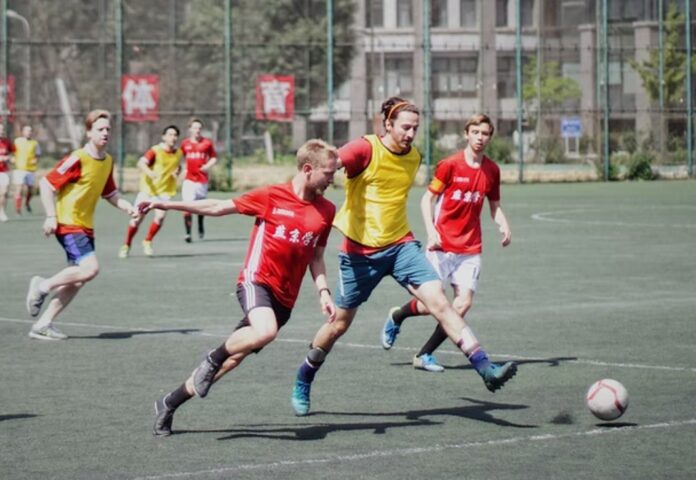
The recently completed Premier League season was a season like no other. Liverpool and Manchester City have two of the greatest Premier League managers at the helm with both Pep Guardiola and Jurgen Klopp taking the standards of the English game to new heights.
Tactically both of these teams are playing the game in a way we have barely seen before.
There have been many managers before them that have redefined the tactics of their eras.
This article, supported with research by FootballToday, will explore what tactics some of the great managers have employed and how they have evolved throughout the Premier League.
Sir Alex Ferguson
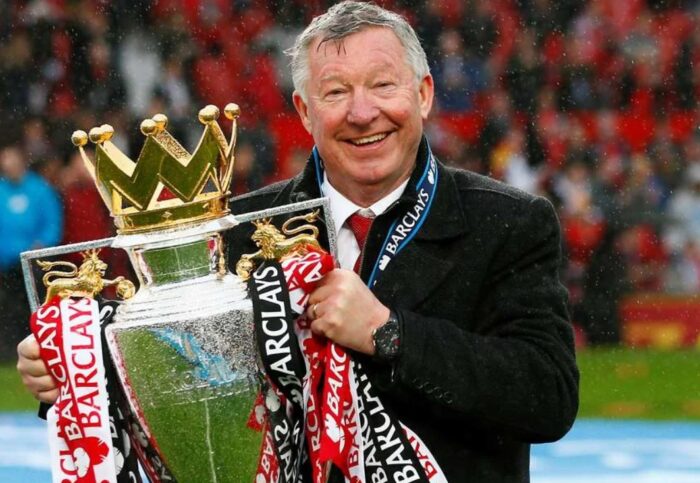
Despite the great heights that both Klopp and Guardiola have taken the league to, the greatest Premier League manager is still Sir Alex Ferguson. Ferguson in his 27-year tenure at Old Trafford won an astonishing 13 Premier League titles. It’s important to remember that Ferguson didn’t inherit a championship-winning side and had to build his side to be capable of competing amongst the very best both at home and in Europe.
Ferguson’s management style was aggressive with his side playing attractive front foot football. The Ferguson era mostly revolved around the 4-4-2 era, but like it is today, a vital component of any Ferguson team was success down the flanks. Players such as Neville, Irwin, Beckham, Giggs, Nani, Evra and Ronaldo all offered superb width and it was a common sight to see Ferguson’s fullbacks maraud forward on regular occasions.
With regular crosses coming into the box from both the left and right flanks, it was key that Ferguson had players in the box to convert those key chances.
In footballing terms, Ferguson’s approach to the game was simple. Keep the ball, pass the ball forward and take your chances. Ferguson was never afraid to rely on his special players to get them out of a tricky spot. Gary Neville explains more;
“I always remember when we were in trouble at times at United, Sir Alex would put Nicky Butt in midfield with Roy Keane.
“He’d put [Paul] Scholes just off to the left and tuck him in a bit, he’d put Becks [David Beckham] to the right — or he’d even put Darren Fletcher to the right — and play a narrow four and leave the two strikers up knowing they’d get a goal.
“We always used to work on the theory, when we were playing badly and we were in a bad moment, that you keep your shape, keep a clean sheet and just one of the lot upfront will score a goal.
An argument can be made that Ferguson focused more on his players than specific individual tactics. Ferguson had a side of leaders, of men. It was a team full of generals and was a team full of winners. Utd have toiled in recent years but a return to Ferguson’s formula would help lift them out of the doldrums they currently find themselves in.
Arsene Wenger
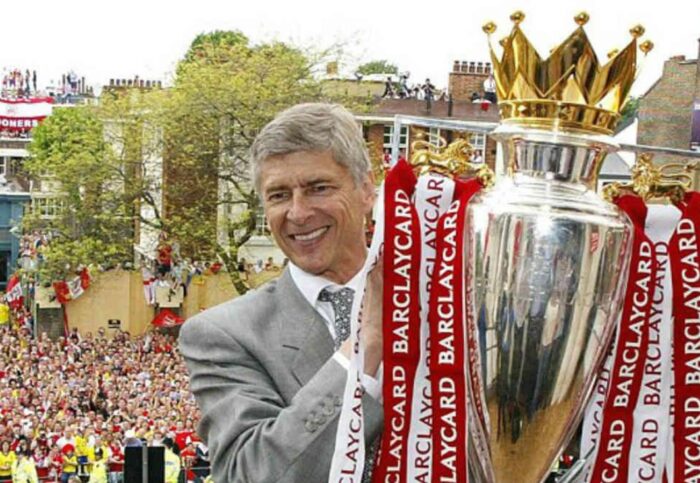
The first manager to break Ferguson’s dominance of the Premier League was Arsene Wenger. Wenger who had enjoyed spells in France and Japan before joining the North London side is often heralded as one of the main architects in bringing sports science and factors such as nutrition and fitness to the English game.
Wenger was a revolutionary.
Wenger is the only manager to have led an unbeaten side in Premier League history. The team, fondly known as ‘The Invincible’s’, were full of top talent with stars such as Thierry Henry, Patrick Vieira, Sol Campbell and Robert Pires all playing key fundamental roles, but what were his tactics like?
Initially, Wenger realised that there was incredibly little that he needed his defence to do.
The Frenchman had inherited a back 5 of Lee Dixon, Tony Adams, Steve Bould, Nigel Winterburn and David Seaman. With these five being so defensively sound, Wenger’s main aim was to get the most out of his midfielders. The signings of Emmanuel Petit and Patrick Vieria were especially astute as they allowed Wenger to have two strong, ball carrying midfielders that could control the flow and tempo of the game both from an offensive and defensive point of view.
Where Wenger adapted was when these players retired. Wenger wanted his team to be the strongest and quickest team around and in his mission to achieve these, he would play players in positions that they weren’t necessarily 100% comfortable playing in. Ashley Cole was a former striker who was converted to a left-back, and Lauren a former midfielder was made into a right-back back. Kolo Toure had never played as centre half but instead had been a midfielder. What all these players were though were exceptionally gifted athletes who would lend themselves to the counter-attacking style that Wenger wanted to adopt.
Wenger became the first manager in the Premier League to utilise the counterattack. By winning the ball back or from defending set-pieces, Arsenal would use the pace and power in the team to transition from defence to attack exceptionally quickly.
Jose Mourinho
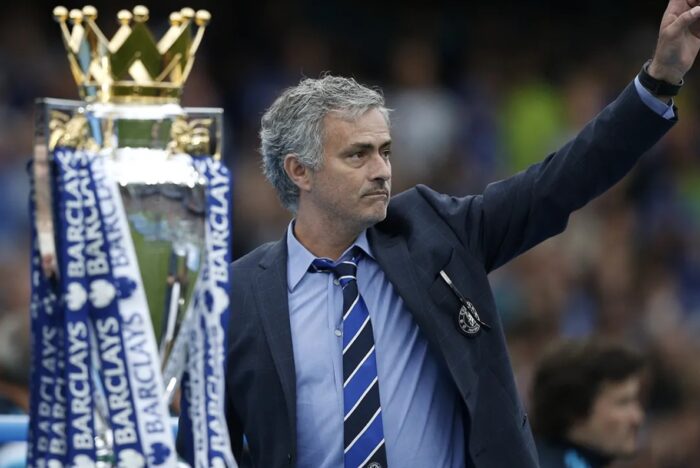
After guiding Porto to an unlikely Champions League victory back in 2004, Jose Mourinho would arrive in the Premier League quickly afterwards. Mourinho was seen as the perfect manager to kick start former Chelsea owner Roman Abramovich’s football revolution.
Armed with almost an unlimited budget, Mourinho set to work in moulding a Chelsea side that would mirror how he wanted his teams to play.
It’s hard to forget that despite Mourinho now garnering a reputation for setting up his teams defensively, his Chelsea sides between 2004 – 2006 were some of the best sides the Premier League has ever seen.
In an era where 4-4-2 was still the preferred formation, Mourinho instantly changed that by adopting a 4-3-3. Not only that, but Mourinho’s tactics help change and set up how we view the set-up of a modern midfield.
Chelsea would experience a lot of joy against their opponents due to their 3 in midfield dominating the opponents.
Claude Makelele was the key reason behind this.
Makelele would redefine the defensive midfielder role, his athleticism would see him break up play all over the pitch and his screening allowed more offensive-minded players the opportunity to play wide and stay high up the pitch to utilise their attacking qualities to the fullest.
Arjen Robben and Damian Duff would play either side of Didier Drogba, resulting in a front three that had an exciting blend of pace, strength, skill and trickery. Mourinho wanted to unleash his wide men, so much so that often Didier Drogba would come deep for the ball and distribute it to Robben and Duff who had often bombed on ahead of him.
Frank Lampard also excelled in Mourinho’s team. In 2004, Lampard would go on to score a career-high amount of goals from his midfield position, with the Englishman being given full licence to get forward as often as he could.
Mourinho’s flexible and fluid 4-3-3 was the blueprint for many of the formations we see today.
Jurgen Klopp
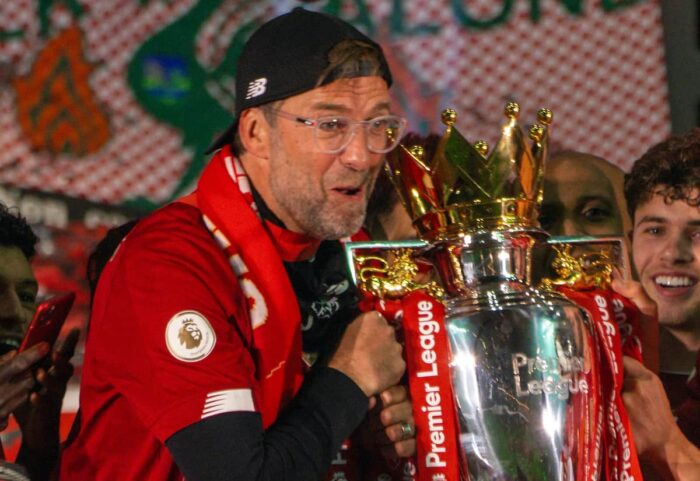
When Jurgen Klopp arrived at Liverpool back in 2015, he promised Liverpool fans that his team would play ‘rock and roll’ football. What this meant is that Liverpool would employ the German-designed ‘Gegenpressing’ tactic. In English terms, this meant that Liverpool would master the arts of counter-pressing, to win the ball as high up the pitch as possible.
The tactic was first created by Ralph Rangnick and has been adopted by other German coaches such as Klopp, Thomas Tuchel and Julian Nagelsmann.
By trying to win the ball high up the pitch, the objective is that teams will be able to create numerous scoring opportunities against fewer defensive players. The press must be started by the forward players so a front two or three must be exceptionally fit.
When playing a Gegenpressing style, the team trying to win the ball back will push their defence high up the pitch. This in effect makes the pitch incredibly small and suffocates the space that opposition teams have to operate in.
Playing these aggressive tactics has served Liverpool incredibly well as they have become one of the best teams in European football. The counter-pressing tactics that Liverpool employ require complete team chemistry.
If one player doesn’t do their job, teams can experience some joy over the top and down the flanks, if a team can break through a press, this can often leave opposing attackers alone with isolated defenders.
Liverpool more often than not gets the balance right and with Klopp having just signed a new four-year deal, Liverpool fans will be hoping that the team’s Gegenpressing tactics will launch them to even more success.
Pep Guardiola
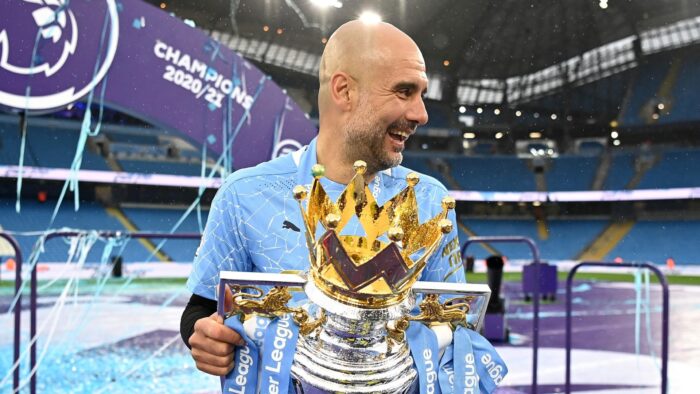
It seems right to end this article with a focus on the master tactician that is Pep Guardiola.
No matter where Guardiola has gone he has always remained true to his core principles. Guardiola evolved the tiki-taka tactic which centres around short, sharp passing and always overloading the opposition with one more passing option.
Guardiola adopts a 4-3-3 formation but due to his side often dominating the ball, his formations and his players’ positioning are incredibly fluid. His full-backs not only bomb up the pitch but can also offer defensive solidity by tucking inside. His midfielders are always on the move, often arriving late into the box and scoring buckets of goals. In recent years both Ilkay Gundogan and Bernardo Silva have been prime examples of this.
Guardiola’s tactics and positional fluidity have seen the likes of Phil Foden, Riyad Mahrez, Kevin De Bruyne and Raheem Sterling all lead the line. Despite not being classed as anywhere near traditional centre-forwards, each of these players has a high amount of technical skill that has seen City successfully operate without the need for a typically recognised number nine.
A trait of Guardiola’s teams is their ability to work hard off the ball. Every side he has coached works incredibly hard and although they don’t press as much as Klopp’s Liverpool side the demand to win the ball high is just as important.
City can keep the ball for hours and strangle their opposition. If City scores the first goal of a game, their ability to keep the ball will draw their opponents out and City can then exploit the space. It isn’t surprising to see that City have won more games by a four-goal margin than any other team in Europe since Guardiola took over.
















